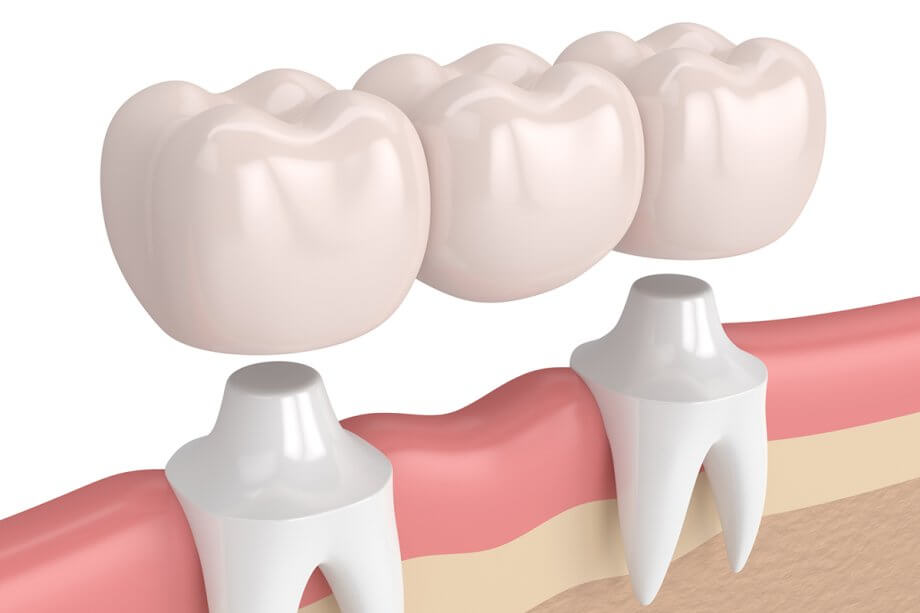Are you missing a tooth (or several consecutive teeth)? If so, and you wish to replace your missing tooth or teeth with prosthetic teeth, you may have several potential treatment options to consider.
One option is a dental bridge. Before deciding a dental bridge is right for you, discuss the topic with your dentist. You may have questions they can shed light on. For instance, perhaps you’d like to know how long it may take for a dental bridge to begin feeling natural in your mouth. Keep reading to learn more.
What is a Dental Bridge?
A dental bridge is a replacement tooth or a set of replacement teeth that fills in a gap in a patient’s smile. Typically, dental bridges come in one of the following forms:
- Traditional: A traditional dental bridge consists of one or more false teeth (pontics). Crowns covering the two healthy teeth on either side of the gap where a patient’s teeth are missing anchor the pontics in place.
- Cantilever: A cantilever dental bridge uses only one tooth to support the bridge. Because this method places significant stress on the anchoring tooth, a dentist usually recommends it when other options aren’t feasible.
- Implant-Supported: A dentist might consider this option if a patient is missing multiple teeth. Instead of using healthy teeth to anchor a bridge in place, a dentist can use implants to replace the outermost teeth in a gap. These implants will support the bridge.
- Maryland: To install crowns over the supporting teeth for a traditional dental bridge, a dentist must remove some enamel from these supporting teeth. That’s not necessary with a Maryland bridge, which uses “wings” that affix to the back of the support teeth. Maryland bridges may not be as strong as traditional dental bridges, but they don’t require removing enamel from healthy teeth to support a bridge, making them more appealing to some patients.
Your dentist can explain the pros and cons of each type of dental bridge in greater detail. They’ll help you determine which type is right for you.
Getting Used to a Dental Bridge: What You Need to Know
Feeling a little bit of soreness and discomfort during the first few days after receiving a dental bridge is normal. Although some patients grow accustomed to the feel of a bridge more quickly than others, generally, it may take about two weeks for discomfort to go away completely.
Contact your dentist right away if your discomfort feels excessive, if it lasts longer than two weeks, or both. Significant or long-lasting discomfort may indicate someone made a mistake during the installation process.
Correcting such mistakes sooner rather than later is vital. A dental bridge that doesn’t fit properly isn’t merely a potential cause for discomfort—it can also trap bacteria, increasing your chances of developing dental decay or gum disease.
Dental Bridge Maintenance: Important Tips
Various factors can influence how comfortable a dental bridge does or doesn’t feel in your mouth. Patients who maintain their bridges often find they remain comfortable for a relatively long time. According to the American Dental Association, if a patient takes care of a dental bridge properly, it can stay in good condition for about a decade.
Tips for maintaining a dental bridge include:
- Brush at least twice a day
- Floss at least once a day
- Avoid eating excessively hard or chewy foods
- When playing sports, wear a mouthguard
Additionally, be sure to schedule regular visits with your dentist. Along with caring for the rest of your healthy teeth, a dentist can assist you in guarding against dental bridge discomfort.
Learn More About Dental Bridges in Brunswick, OH
Do you think you might be a good candidate for a dental bridge? If so, our team at Bellissimi Dental, in Brunswick, OH, is prepared to discuss whether this treatment option is ideal for your needs. Get started today by contacting us online or calling us at 330-741-3334 to request an appointment.

